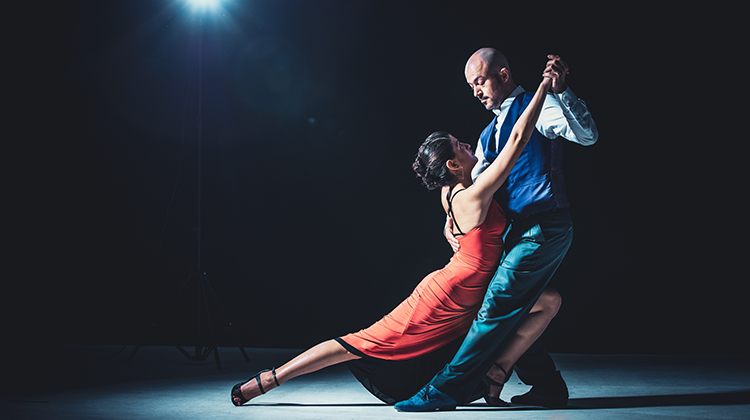The Internet has changed our lives like no other technology of our time. Most probably, the most significant contribution to our modern lives is the ease of access it has provided us with. Not only are we a click away from any factual answer that might pop up in our minds, but also from cultural expressions that were only accessible to those who visited the countries where they were produced.
As far as music goes, it has never been easier to listen to and discover new artists. Exploring the musical landscape of a country is a fascinating journey through its history until the present. For this reason, I’ve tried to put up the most representative artists from Argentina for you to check out.
As any list of this kind is undeniably subjective and I might be favouring certain artists and leaving out some others worth mentioning, my goal is to just spark your interest in Argentinian music and point out what a piece of great contribution music might be become to your learning.
I’ve divided the artists into 4 categories: TANGO, FOLKLORE, ROCK, and TRAP, and in each of them tried to offer an overview of the genre as well as include some suggested artists.
¡Vamos!
TANGO
Although Argentina is linked to tango, it’s not a mainstream genre nowadays. Not many locals enrol for tango dance classes, either. There are traditional tango orchestras which perform regularly, but for most younger generations, it’s the music of our grandparents and what many tourists come after. The big names of Tango were established between the 1920s and 1930s, slowly fading out afterwards.
The lyrics of tangos can sometimes be cryptic, as it’s filled with Lunfardo (Argentinian slang) words, but if you take the time to read some of them you can learn a lot. “Cambalache” is a song, which still today feels recently written. Despite having been written in 1934, it describes with astonishing accuracy the reality of our times.
“Que el mundo fue y será una porquería, ya lo sé
En el 510 y en el 2000 también
Que siempre ha habido chorros, maquiavelos y estafa'os
Contentos y amarga'os, valores y doblé
Pero que el siglo 20 es un despliegue
De maldad insolente, ya no hay quien lo niegue
Vivimos revolca'os en un merengue
Y, en el mismo lodo, todos manosea'os
Hoy resulta que es lo mismo ser derecho que traidor
Ignorante, sabio o chorro, pretencioso estafador
Todo es igual, nada es mejor
Lo mismo un burro que un gran profesor
No hay aplaza'os, ¿qué va a haber? Ni escalafón
Los inmorales nos han iguala'o
Si uno vive en la impostura y otro afana en su ambición
Da lo mismo que sea cura, colchonero, rey de bastos
Caradura o polizón
¡Qué falta de respeto, qué atropello a la razón!
Cualquiera es un señor, cualquiera es un ladrón
Mezcla'o con Toscanini, va Escarfaso y Napoleón
Don Bosco y La Mignón, Carnera y San Martín
Igual que en la vidriera irrespetuosa
De los cambalaches se ha mezcla'o la vida
Y herida por un sable sin remaches
Ves llorar la Biblia junto a un calefón
Siglo veinte, cambalache problemático y febril
El que no llora no mama y el que no afana es un gil
Dale nomás, dale que va
Que allá en el horno se vamo' a encontrar
No pienses más, sentate a un la'o
Que a nadie importa si naciste honra'o
Si es lo mismo el que labura
Noche y día como un buey
Que el que vive de las minas
Que el que mata, que el que cura
O está fuera de la ley”
Suggested artists:
CLASSICS - Julio Sosa, Edmundo Rivero, Carlos Gardel, Hugo del Carril, Roberto Goyeneche
MODERN - Orquesta Fernández Fierro, Bajo Fondo Tango Club
FOLKLORE
There are different subgenres within this general term because folklore expresses differently in different regions of the country, with carnavalitos and zambas in the North West, chamamé in the North East, chacarera in the Central North Region and several others. In the Buenos Aires area, on the 25th of May (May Revolution Day) it’s very common that primary students to perform a dance called El Gato.
Peñas are places where tourists and locals go to listen to live music and engage in spontaneous folkloric dances.
Ask an Argentinian and they will mention Mercedes Sosa as the most remarkable representative of what we’ve come to understand as folklore. Her unmistakable voice is soothing and deeply moving. Atahualpa Yupanqui is our folklore legend. A gifted guitarist who travelled across the country on a horse and paid homage to the tunes he learnt
ROCK
Rock music is a genre that, like in most Western countries, has been around since the mid-late 60s. Unlike tango and folklore, rock music could only have come to life in cities and as such, it is still associated with city life. There have been are still are amazing rock bands over the decades, but I’ll stay with artists who have established themselves as solo artists. All of them have taken part in bands, but have a reputation of their own.
One of them is Luis Alberto Spinetta. Recognized for his poetry and complex guitar technique, his career spans an amazing display of creative power. Charly García was very close to him, and he is our present time living legend. Charly García has contributed some of the hymns of our parents’ generation. He and Spinetta wrote “Rezo por vos”.
In the late ‘80s Fito Páez started to build a name in the music scene, and his 1992 album, “El amor después del amor” is the best-selling rock album of all time in Argentina. His music shows a sensitivity to the Argentinian identity like no other.
Gustavo Cerati was the lead singer and guitarist in “Soda Stereo”, one of the few Argentinian bands that became popular in other parts of Latin America. When he left the band, he moved on to pioneer sounds
Marilina Bertoldi is currently the best example of a modern rock artist. Her growing popularity reflects the ongoing transformations in the music scene, formerly ruled by almost exclusively male artists.
TRAP
In the past 5 years or so, trap music has established a new music culture, totally different from any of the previous. Its modern melodies and instrumentation are a demonstration that music is ever-changing and we cannot know what will come next.
Suggested artists:
WOS, Duki, Nicki Nicole, Catriel and Paco Amoroso
I could keep writing about Argentinian artists and their music, but there is an element of curiosity attached to music which cannot be transferred. I invite you to dive in and start exploring.
By the way, do you know any Argentinian artists who are not mentioned in this article? Please comment and add your personal recommendations.
Thanks for reading.







